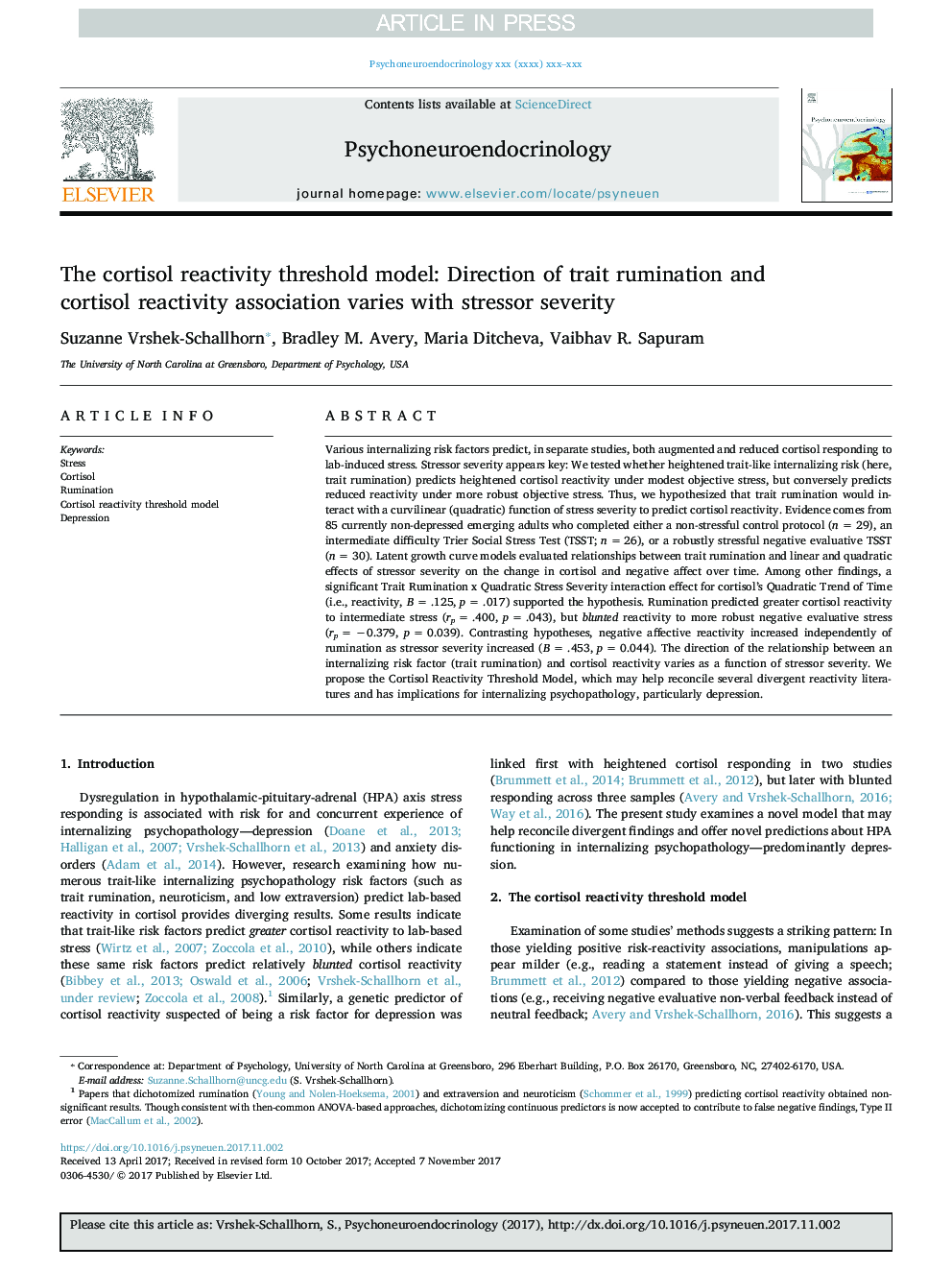| کد مقاله | کد نشریه | سال انتشار | مقاله انگلیسی | نسخه تمام متن |
|---|---|---|---|---|
| 6817640 | 1433951 | 2018 | 10 صفحه PDF | دانلود رایگان |
عنوان انگلیسی مقاله ISI
The cortisol reactivity threshold model: Direction of trait rumination and cortisol reactivity association varies with stressor severity
ترجمه فارسی عنوان
مدل آستانه واکنش پذیری کورتیزول: جهت نشخوار صفات و ارتباط واکنش پذیری کورتیزول با شدت تنش زدایی متفاوت است
دانلود مقاله + سفارش ترجمه
دانلود مقاله ISI انگلیسی
رایگان برای ایرانیان
کلمات کلیدی
فشار، کورتیزول، شکنجه، مدل آستانه واکنش کورتیزول، افسردگی،
موضوعات مرتبط
علوم زیستی و بیوفناوری
بیوشیمی، ژنتیک و زیست شناسی مولکولی
علوم غدد
چکیده انگلیسی
Various internalizing risk factors predict, in separate studies, both augmented and reduced cortisol responding to lab-induced stress. Stressor severity appears key: We tested whether heightened trait-like internalizing risk (here, trait rumination) predicts heightened cortisol reactivity under modest objective stress, but conversely predicts reduced reactivity under more robust objective stress. Thus, we hypothesized that trait rumination would interact with a curvilinear (quadratic) function of stress severity to predict cortisol reactivity. Evidence comes from 85 currently non-depressed emerging adults who completed either a non-stressful control protocol (nâ¯=â¯29), an intermediate difficulty Trier Social Stress Test (TSST; nâ¯=â¯26), or a robustly stressful negative evaluative TSST (nâ¯=â¯30). Latent growth curve models evaluated relationships between trait rumination and linear and quadratic effects of stressor severity on the change in cortisol and negative affect over time. Among other findings, a significant Trait Rumination x Quadratic Stress Severity interaction effect for cortisol's Quadratic Trend of Time (i.e., reactivity, Bâ¯=â¯.125, pâ¯=â¯.017) supported the hypothesis. Rumination predicted greater cortisol reactivity to intermediate stress (rpâ¯=â¯.400, pâ¯=â¯.043), but blunted reactivity to more robust negative evaluative stress (rpâ¯=â¯â0.379, pâ¯=â¯0.039). Contrasting hypotheses, negative affective reactivity increased independently of rumination as stressor severity increased (Bâ¯=â¯.453, pâ¯=â¯0.044). The direction of the relationship between an internalizing risk factor (trait rumination) and cortisol reactivity varies as a function of stressor severity. We propose the Cortisol Reactivity Threshold Model, which may help reconcile several divergent reactivity literatures and has implications for internalizing psychopathology, particularly depression.
ناشر
Database: Elsevier - ScienceDirect (ساینس دایرکت)
Journal: Psychoneuroendocrinology - Volume 92, June 2018, Pages 113-122
Journal: Psychoneuroendocrinology - Volume 92, June 2018, Pages 113-122
نویسندگان
Suzanne Vrshek-Schallhorn, Bradley M. Avery, Maria Ditcheva, Vaibhav R. Sapuram,
